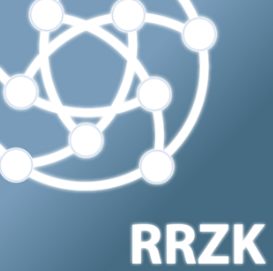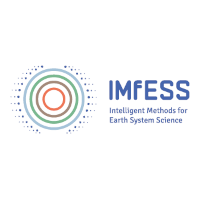Research Infrastructure
The KPA supports and uses the already strong infrastructure at the University of Cologne, such as the globally unique platform for geochronology.
ACTRIS, the European Research Infrastructure Consortium (ERIC) for Aersols, Clouds, and Trace Gases, forms the largest global multi-site infrastructure for atmospheric research, involving more than 100 institutions across Europe.
Within ACTRIS, JOYCE is a National Facility for cloud remote sensing.
The Institute of Geophysics and Meteorology at the University of Cologne has been operating the cloud observation platform JOYCE (Jülich Observatory for Cloud Evolution) in cooperation with Forschungszentrum Jülich for more than ten years. JOYCE is located on the Institute for Climate and Energy Research (ICE3) roof platform at Forschungszentrum Jülich. JOYCE additionally hosts the Topical Center Unit for MicroWave Radiometers (MWR) within the ACTRIS Center for Cloud Remote Sensing (CCRES). This unit provides support and state-of-the-art expertise for ground-based microwave radiometer (MWR) operation, data quality control and quality assurance, retrieval development, and testing of new instruments.
The University of Cologne has committed to providing the Topical Unit MWR services to ACTRIS for at least 10 years after the finalization of the ACTRIS implementation phase in 2026. Within ACTRIS-D ("Deutschland"), a BMBF-funded collaborative research initiative, funding was provided to establish the Topical Unit, including acquiring different state-of-the-art MWR. After the implementation phase, the Topical Center operations are supported long-term through ACTRIS-ERIC and the German Ministry for Environment, Nature Conservation, Nuclear Safety and Consumer Protection (BMU).
CologneAMS is the center for Accelerator Mass Spectrometry (AMS) at the University of Cologne.
An electrostatic tandem accelerator with a maximum voltage of 6 MV and various detectors for ion analysis has been in routine operation at the Institute of Nuclear Physics since the end of 2011.
At the end of 2011, routine operation was initially started for 14C. In 2012, 10Be und 26Al were added to the standard measurement program. In the meantime, Cl and Pu measurements are also routinely performed.
CologneAMS is not only available to scientists at the University of Cologne, but also to external users. Funding for the center was provided by both the DFG and the University of Cologne. Additional funding for the extension and expansion of the facility was provided by the German Geoscience Center Potsdam (GFZ) under a cooperation agreement.
The Cologne Luminescence Laboratory (CLL) focuses on constraining landscape evolution in various environmental settings by using different luminescence dating techniques. Besides applying luminescence as a tool for dating quaternary sediments, the CLL is also working on improving and developing methodological approaches.
The laboratory is equipped with state-of-the-art facilities for measuring equivalent dose and dose rate, including eight luminescence readers, two gamma spectrometers, and various other devices - totaling around €1.5 million - which were set up as part of the Collaborative Research Centres 806 ‘Our way to Europe’ (2009-2021) and 1211 ‘Earth Evolution at the Dry Limit’. The DFG funds the latter and is in its 3rd funding phase from 2024-2027.
Inductively coupled multicollector plasma mass spectrometry (MC-ICP-MS) offers the unique possibility to perform precise isotope ratio measurements for a wide range of elements.
The Geochemistry/Cosmochemistry group previously have one ThermoFisher Neptune MC-ICP-MS system equipped with autosamplers and various sample delivery systems. A second identical device was replaced in November 2023 by a new large-scale device costing €1.3 million, the Neoma Multicollector ICP-MS/MS with mass prefilter and collision cell from ThermoFisher Scientific. This has an additional collision chamber and therefore offers more options.
More details here.
Isotope variations in nature result from radiogenic ingrowth, the mass-dependent fractionation of stable isotopes. In meteorite samples in particular, isotope variations also result from irradiation processes or residues of nucleosynthesis. The investigation of the isotopic composition of elements in geological and cosmochemical materials makes it possible to gain new insights, e.g. into the formation of the solar system and its planets, geodynamic processes on Earth, environmental changes and the temporal sequence of geological events.
There are many other measuring instruments for analysing hard rocks, gases and liquids - see the facilities of the Institute of Geology and Mineralogy - as well as a clean laboratory.These clean rooms are particularly suitable for the chemical extraction of elements for isotope analysis and are equipped with laminar flow workstations, distillation devices, etc.
In addition to many rock samples from Earth and other celestial bodies, lunar rocks brought to Earth by the Chinese National Space Agency (CNSA) in 2020 will also be analysed in the near future. More details here.
Im geowissenschaftlichen Labor des Geographischen Instituts der Universität zu Köln werden umfassende geowissenschaftliche Untersuchungen mit modernen Analysegeräten, im Rahmen von Forschungsprojekten, Abschlussarbeiten und Lehrveranstaltungen, durchgeführt. Das Labor des Geographischen Instituts besteht seit 2004 in seiner jetzigen Form und bietet auf über 800 m² verschiedene Möglichkeiten sich diversen geowissenschaftlichen Fragestellungen zu widmen. Der Fokus der Betrachtung liegt hierbei im Wesentlichen auf sedimentologischen, hydrogeographischen, geochemischen sowie geo- und paläoarchäologische Fragestellungen. Forschungsarbeit im Labor wird im Wesentlichen durch Dissertationsarbeiten, Drittmittelprojekte und projektbezogene Abschlussarbeiten getragen. Im Rahmen von interdisziplinärer Forschungsarbeit, wie zum Beispiel in Sonderforschungsbereichen, werden ebenfalls externe Proben bearbeitet und analysiert. Ein Beispiel ist der SFB 1357 Mikroplastik, der sich in der 2.Förderphase von 2023 bis 2026 befindet.

As a central institution, the Computer Center RRZK offers comprehensive IT services to members of the University of Cologne. In addition to the support of a staff or student account and numerous services at the university, such as WLAN, e-mail, or VPN, the high-performance computer RAMSES is available to researchers from Cologne and proportionately from all over North Rhine-Westphalia for their research work via the RRZK (ITCC since 2024). The HPC (High Performance Computing) can be used to run computing applications that can no longer be calculated efficiently on individual computers. Complex simulations, for example, can be carried out thanks to the performance of 100 teraflop/s peak.
Since 2012, the core-renovated building has offered premises for all employees of the RRZK. About 100 people work here in 7 departments (student and research assistants, employees in technology and administration as well as science).
Since August 2022, the meteorological measuring station has operated at the University of Cologne on the grounds of UniSport to measure relevant weather, climate, and environmental parameters. The measuring station, whose operation is designed for the long term, is a cooperation between the City of Cologne and the University of Cologne. The City of Cologne finances most of the measuring instruments and a student assistant. Cologne UniSport provides the site and access, while the university's central administration supports the infrastructure. The station is set up and operated by the Meteorology Department of the Institute of Geophysics and Meteorology. In addition, the Stadtentwässerungsbetriebe Köln (Cologne Municipal Drainage Services) cooperates with the municipality for precipitation measurements.
More.
